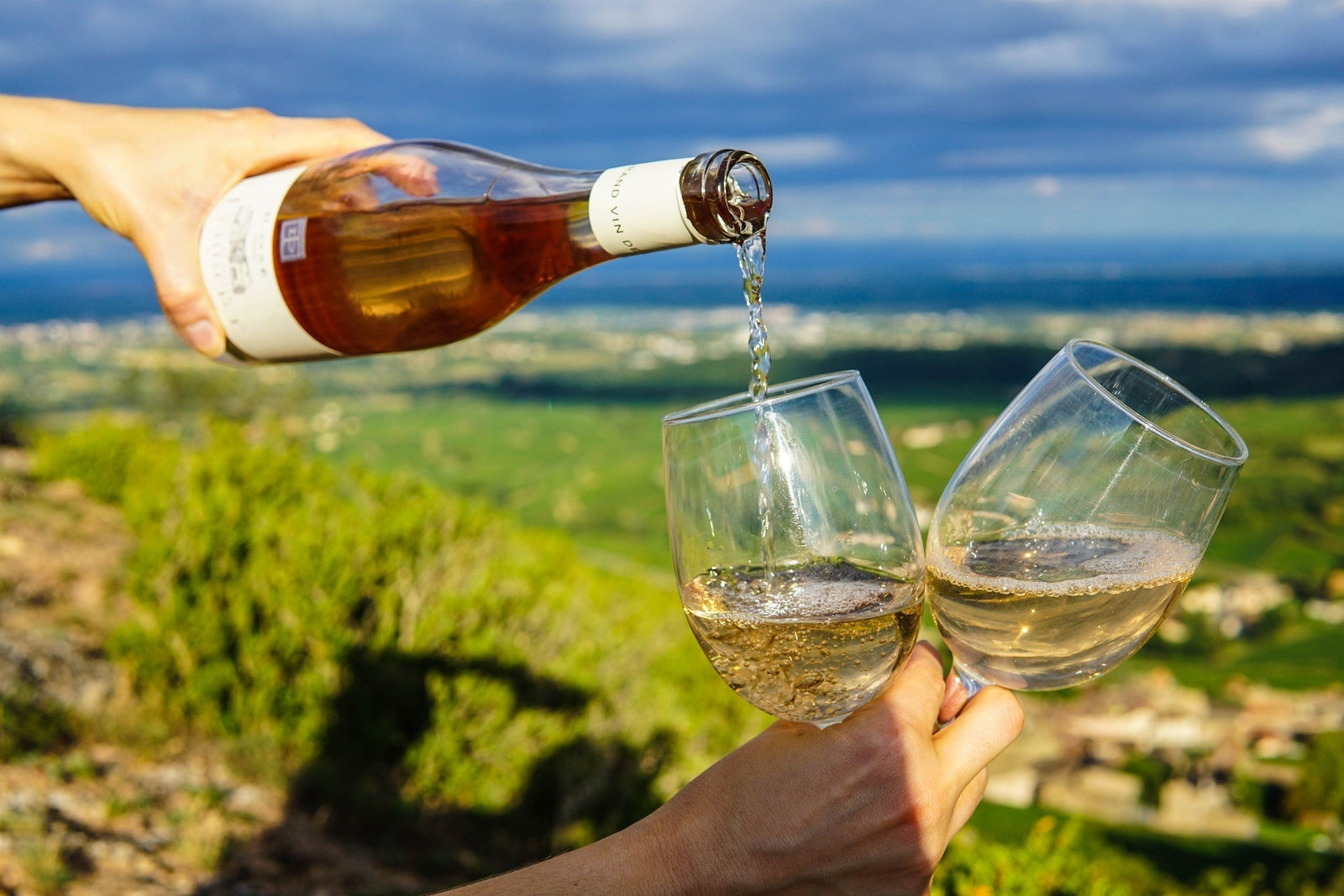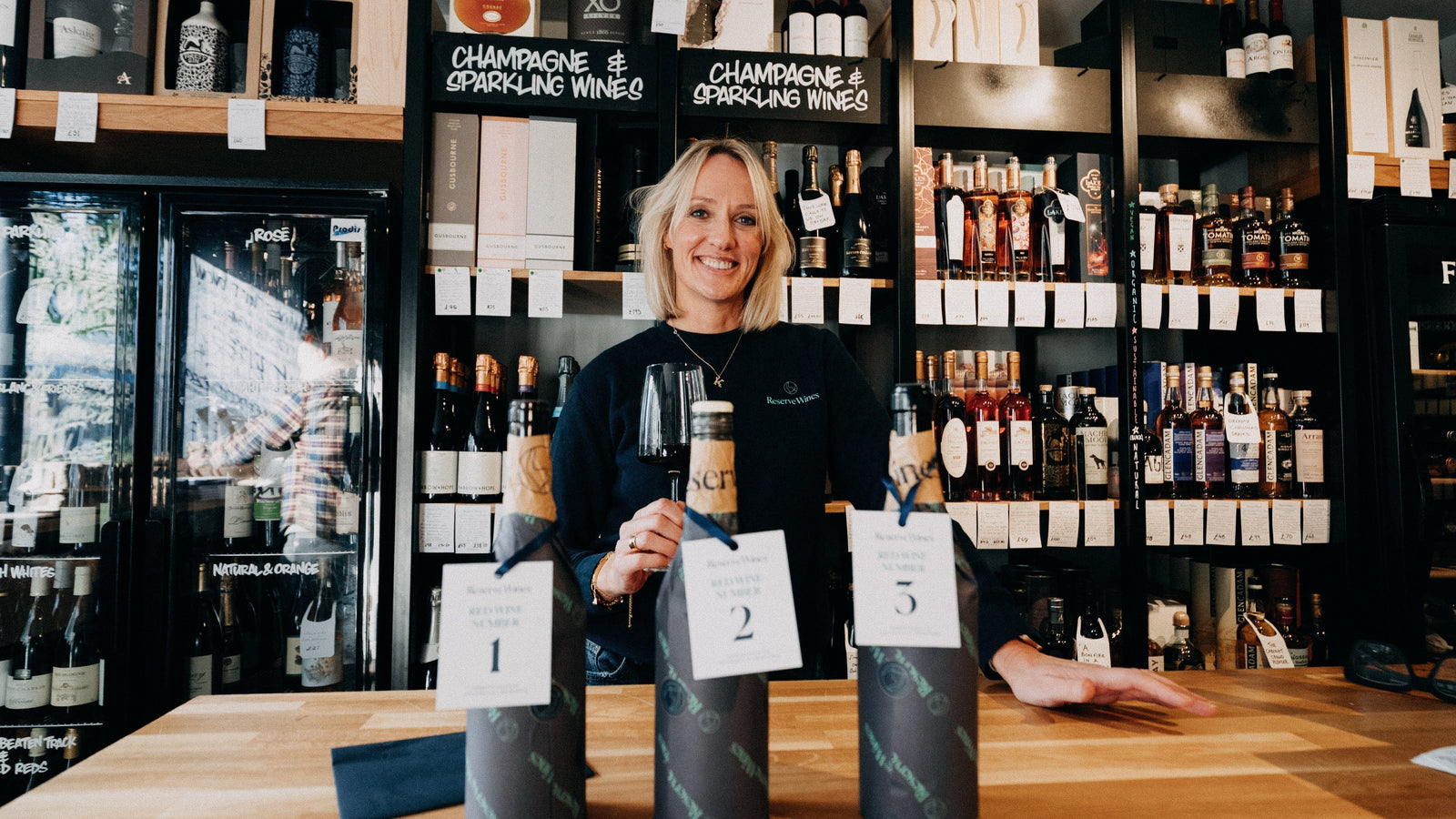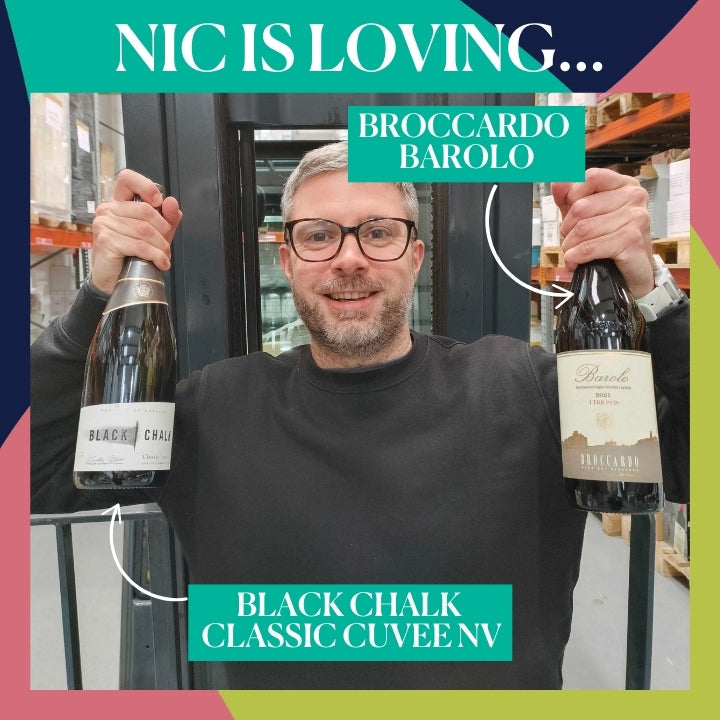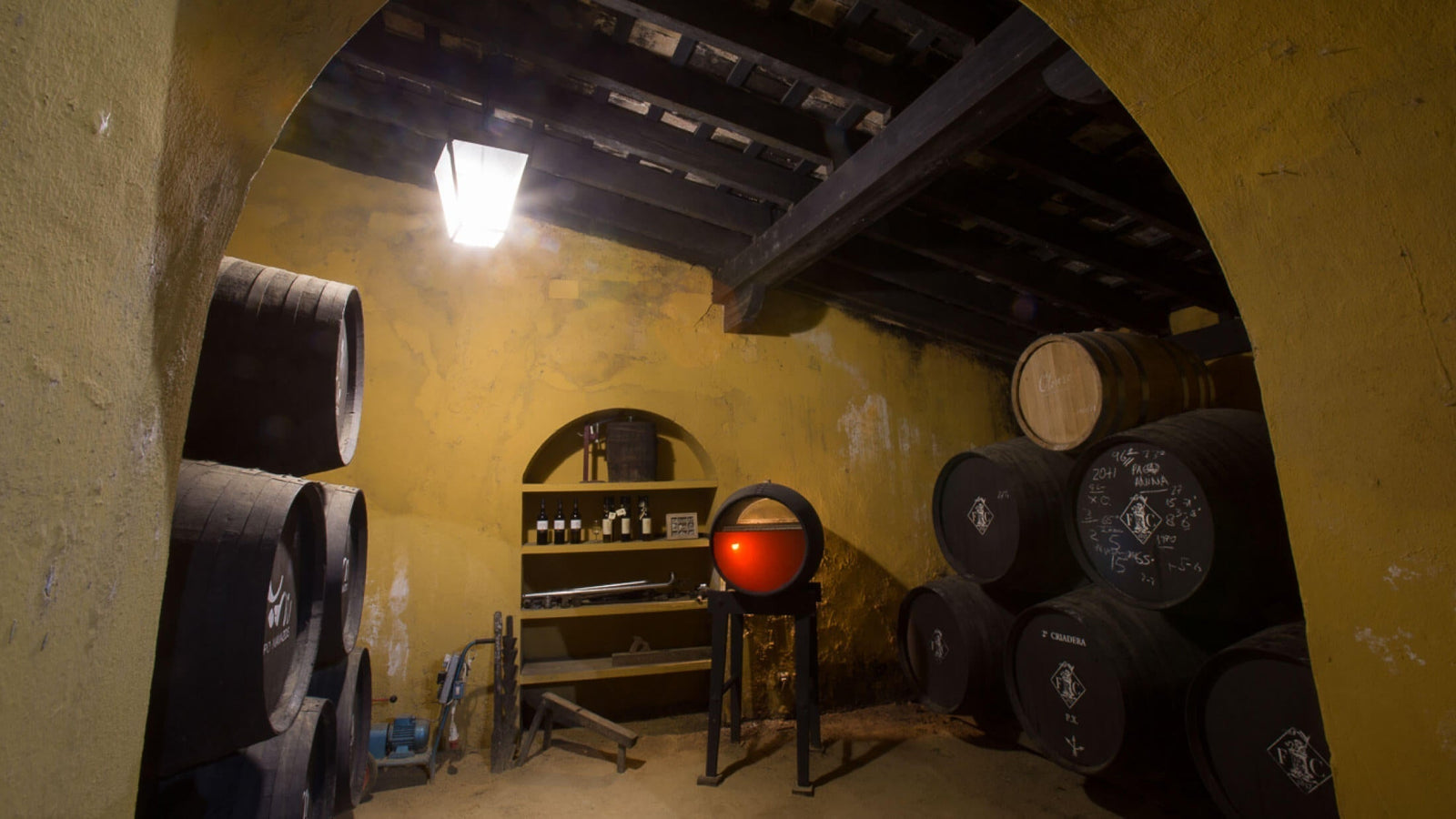We're approaching summer, which means that once again many of us will be reaching for pale pink refreshing wines as our style of choice. Rosé wine is synonymous with a summer lifestyle - even as more and more of us continue drinking it all year round. Driven by memories of summer holidays and long alfresco evenings watching the sun go down with the light reflecting in the pale pinks and orange hues. We love it, especially when we're by the sea.
Or at least that seems to be the case, as the Mediterranean is home to a very popular style of dry rosé. The distinctive wines of the Provence AOC and Méditeranée IGP have become the benchmark style of the modern pink drink. From their fashionable shade of pale salmon pink, to the soft round fruits and crisp dry finish. This is a style that has captured attention. So let's get to know it a little better.
A vineyard in Provence by François Millo
Get to know: Cotes De Provence
One of Europe's most popular destinations for glamour and sunshine, the French Riviera is known for the deep blues of the Mediterranean sea and this famous stretch of coastline takes in the cities of Cannes, Nice and St Tropez.
The local wine in Provence is rosé - which makes up 89% of production. Made from a blend of Grenache, Mourvedre, Cinsault and Syrah grapes, the wine is delicate, fresh and effortlessly cool with a serious structure. It has the elegance of a good white wine with intense, fresh and generous fruit-forward flavours of white peach, melon, strawberry, redcurrant and lemon zest. The feel in the mouth is a tender caress of fruity sensations. It is mellow but leads to a crisp, dry finish. It is such a fashionable choice that celebrities have bought up vineyards in the region and created their own brands.
How is Provence Rosé made?
This style began when a handful of pioneering Provence producers changed their wine production techniques to create a fresher wine style in order to modernize the wines for the twenty-first century and beyond. With gentler pressing and the advent of temperature control in the mid- to late-1980s, Provence developed a wine style that consumers received very positively. Provençal wine producers quickly adopted their techniques and to suit their preferences.

Rows of Vines in a Provence Vineyard by François Millo
Such is the popularity and interest in the wines they produce, many other winemakers wished to replicate it. In 1999 to support and educate the local producers on winemaking improvements in order to help them master this fresher, lighter wine style, the Wines of Provence trade body created the Rosé Research Centre, the world’s only research facility dedicated to rosé wine (housed appropriately in a peachy-pink farmhouse). Today the centre continues to work on techniques - in the vineyard as well as in the cellar - to help producers preserve Provence’s iconic rosé style and navigate climate change.
Though the experimental work of the Centre du Rosé is focused on Provençal grape varieties and terroirs, producers from around the globe benefit from its ground-breaking research in vinification techniques and laboratory analysis.
How to serve Rosé Wine
Provence rosé wines should be served chilled, between 8° and 10° C. Allow 2 to 3 hours to cool your bottle in the fridge. To keep your wines fresh, try chilling your glasses in the fridge too until it's time to serve.
This style of rosé is ideal as an aperitif, and it is associated with Mediterranean flavours: Provençal pizza, tapenade, anchovy paste, and focaccia. At the table, it pairs as well with a fillet of sea bream as well as grilled beef, or even cherry tart for dessert.
What to try: Chateau L'Escarelle Les deux Anges Rose
Chateau de L’Escarelle is of one of the most prestigious wine estates in the heart of Provence, with 100 hectares of organically certified vineyards set in 1,000 hectares of beautiful woodland. The wine ‘Les deux anges’ (the two angels) draws its inspiration from two statues found in the site of a new state-of-the-art storehouse they began building in 2015.
Made using a blend of 60% Syrah 20% Grenache 20% Cinsault grapes, it delivers subtle and elegant aromas with wild strawberry and citrus fruit on the nose. The palate is clean and fresh with beautiful smoothness and pink grapefruit and cranberry notes. Best drunk as an aperitif or with Provençal dishes, fish or grilled meats.

France - Méditerranée IGP
Beyond Provence AOC is a sprawling area now classified as Méditerranée IGP that includes 10 winegrowing regions ranging from Alpes de Haute-Provence in the east, Ardèche to the west and follows the Le Rhone river from The Rhone valley in the North to Bouches du Rhône in the south. The climate in this south west corner of France is enviable, with 2,500 hours of sunshine every year and features rolling hillsides, well-draining calcareous and limestone soils near the Mediterranean sea and fresh salt-tinged sea breezes and Le Mistral gusts that keep vines dry.
Rosé is still the dominant style produced accounting for 70% of the regions wine. It is enjoyed all year round as part of the Mediterranean lifestyle that is part of what makes these wines so appealing.
The region is currently a great source for wines that are in the Provence style and maintain a genuine authenticity, while being very good value.
What to try: Estandon Le Rollier
Estandon Vignerons are a cooperative venture that are part of the Cercle des Vignerons de Provence union of cooperatives whose objective is to strengthen Rosé de Provence’s leadership position. They are committed to quality and use the latest generation bottling lines to protect the quality of the wines created in the vineyards.
This beautiful pale wine is made on the Mediterranean coast, which is also famous for the beautiful Rollier bird that features on the label. It is a crisp dry wine with aromas of white peach, citrus and a hint of red summer fruits. This is an elegant and effortless wine best served chilled and enjoyed with friends while eating shellfish, risotto or chicken dishes.
Kate Says
"We serve this in our bars here in the North West and the feedback from customers has been brilliant. It's the ideal rosé that can hold your attention with each sip, but can also fade into the background when you want to enjoy the company of friends."
What to try: Amie X Rose 2021
This pale, dry rosé is produced in the Languedoc-Roussillon region which is to the west of Provence in the south of France. Made from a blend of organic Grenache and Cinsault, this stylish wine is a new brand that was created during the covid-19 lockdown by three friends. It is light and crisp with citrus and strawberry characteristics. Pairing well with salads, grilled or barbecued food and is perfect for the long summer days!

Beyond France
There are of course many other countries with coastline around the Mediterranean Sea and all with their own alternative rosé wines to try.
Italy
If you're visiting Italy and heading to the coast, you're probably going to the Amalfi Coast on the west coast of Italy, just over an hour's drive from Naples. It is a very popular destination for honeymooning couples and has a picturesque landscape of traditional pastel coloured buildings set against lush green hills, steeply rising above the clear blue waters of the Tyrrhenian sea. Though if you're heading here, you'd most likely be drinking the local wines made with the white Falanghina and the red Aglianico grapes.
Alternatively, you could be taking a trip to Sicily. The island has formed a great reputation for good quality, good value wine made using their local grape varieties nero d'avola, grillo, cataratto and nerello mescalese producing red, white and rosé wines such as this pick below:
What to try: Fedele Organic Rose IGP
Here you'll find a vibrant and very appealing Sicilan rosé made by Fedele (which is Italian for loyal.) They aim to be true to their origins and have a deep connection to the vineyard slopes using a blend of local grape varieties. The wine is characterful and bright with tons of fresh red berry fruit flavours. Very refreshing and easy to enjoy. It’s perfect as an aperitif or a great choice with a prawn pasta dish topped with fresh basil.
Kate Says
"This is a very tasty, juicy rosé wine and it's organic to boot. I'd love this at a picnic in the summer, but it's also a good one to enjoy at the end of a long day with a bowl of pasta."
Spain
The influence of the Provence style can be seen in the new wines being made in Spain on the west of the Mediterranean. Rosé wine in Spain was traditionally made in a clarete style (a very pale orange colour) up until the 19th Century when the international market began to favour deeply coloured wines that were possible with new advances in winemaking with extended maceration (skin contact.) This kept the fruit flavours more intact and made the wines more suitable for ageing in barrel - a style that was popular in Rioja by the likes of Vina Tondonia.
Now modern brands like the Barcelona based Born rosé are making wines in a lighter style again (such is the cyclical nature of fashion), relying on the quality of their organic Grenache and Tempranillo fruit grown in the Penedes by winemaker Joan Rovira.
What to try: Vega Tolosa, 11 Pinos Bobal Rose 2023
Kate Says
"A fabulous addition to our Rosé selection. The wine is crisp, fruity and rather spot on for a good day quaffing easily. I'd enjoy this with a red pepper and manchego cheese wrap."
Try this with antipasti platters, picnic bites or a halloumi and grilled veggies kebab.
If reading this has made you thirsty for some rosé, discover our wider selection of pink drinks and find your new favourite with us.

Frequently Asked Questions about Rosé Wine:
What is Rose Wine?
Rose wine is made by crushing red-skinned grapes and leaving the juice in contact with the skins for a few hours. The longer the time in contact with the skins, the deeper the colour. The juice is then removed from the skins and fermented. Rosé wine is not usually fermented or matured in oak barrels. The aim is fresh, fruity flavours.
Is rose sweet or dry?
Rosé wine can be either sweet or dry, but most of the popular styles in the UK - especially those from Provence or other Mediterranean regions - are dry, crisp, and elegant. If you prefer something sweeter, look for styles labelled as White Zinfandel or Blush.
What food goes with rose?
Rosé is one of the most food-friendly wines around. Dry rosé pairs brilliantly with grilled fish, salads, charcuterie, and Mediterranean dishes. Fruiter styles work well with spicy food, while richer rosés can handle roasted vegetables, pasta, and even light meats like chicken or pork.
Is rosé only for summer?
Not at all! While it’s undeniably refreshing in the sunshine, rosé can be enjoyed all year round. Try a deeper-coloured rosé with roast chicken in autumn or a sparkling rosé with festive canapés in winter. Its versatility makes it perfect for any season.
What’s the difference between Provence rosé and others?
Provence rosé, from the South of France, is considered the benchmark for dry rosé. It’s typically pale in colour with delicate notes of citrus, herbs, and red berries. Other rosés, like Spanish rosado or Californian rosé, may be darker, fruitier, or even slightly sweet. It all comes down to grape variety, region, and winemaking style.
Is rosé wine lower in alcohol?
Rosé wines generally range from 11% to 13.5% ABV, so they tend to be similar in strength to white wines - and slightly lower than many reds. That said, alcohol levels vary by producer and style, so always check the label if you’re after a lighter option.
What’s the best rosé under £15?
There are lots of fantastic rosés under £15! A few of our go-to favourites include crisp Estandon Le Rollier,zesty Calusari Rose, and juicy Domaine Gayda, Flying Solo Rose
How long does Rose wine last once opened?
If you're not planning on using a full bottle, you can keep a sealed bottle of rose wine in the fridge for 3-5 days depending on the wine. The more oxygen the wine is exposed to, the faster the wine will oxidise. When this happens, the fruit flavours fade and the wine starts to taste bitter and acidic.
If unopened, Rose wine is generally not suitable for ageing and should be enjoyed within 1 year of purchase.
How Many Calories are in glass of Rosé wine?
Calories in wine are a combination of the amount of alcohol, the amount of carbohydrates (which is wine will be present as residual sugars) and the serving volume. A 175ml glass of a dry 12% abv wine will contain fewer calories than the same serving of a 14% dry wine.
Drinkaware.co.uk offer the following guidance:
It’s easy to see how much alcohol is in any rosé wine - just look out for the Alcohol by Volume (ABV) which you’ll find on the label.
The ABV tells you what percentage of the rosé wine is alcohol. The higher the ABV, the more alcohol is in the drink and the stronger it is - for example, a 13% ABV rosé wine contains 13% pure alcohol.
A typical-strength medium (175ml) glass of rosé wine has around 2.3 units of alcohol.
There are up to 138 calories in a typical 175ml glass of rosé wine
There are up to 197 calories in a typical 250ml glass of rosé wine
There are up to 591 calories in a typical 750ml bottle of rosé wine
Always drink responsibly.












Leave a comment (all fields required)